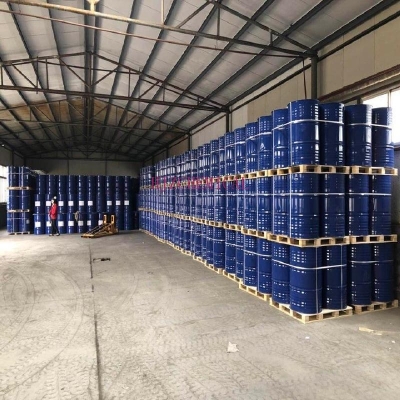-
Categories
-
Pharmaceutical Intermediates
-
Active Pharmaceutical Ingredients
-
Food Additives
- Industrial Coatings
- Agrochemicals
- Dyes and Pigments
- Surfactant
- Flavors and Fragrances
- Chemical Reagents
- Catalyst and Auxiliary
- Natural Products
- Inorganic Chemistry
-
Organic Chemistry
-
Biochemical Engineering
- Analytical Chemistry
- Cosmetic Ingredient
-
Pharmaceutical Intermediates
Promotion
ECHEMI Mall
Wholesale
Weekly Price
Exhibition
News
-
Trade Service
According to new data released by European wind energy trading agency WindEurope, Europe added a total of 2.
6 gigawatts (GW) of offshore wind capacity in 2018, bringing the total installed capacity in the region to 18.
5 GW
.
According to the report, a total of 15 new offshore wind farms came online in 2018, with the UK and Germany together accounting for 85% of the new capacity added last year, at 1.
3 GW and 969 MW
respectively.
Total offshore wind capacity in Europe has increased by 18% by 2018, with 105 offshore wind farms in the region now in 11 countries with a total capacity of 18.
5 GW
.
"Offshore wind continues to grow strongly in Europe," said Giles Dickson, CEO of WindEurope, "and the total capacity increased by another 18%
last year.
Offshore wind now accounts for 2%
of all electricity consumption in Europe.
With the large number of projects under construction and development, this number will increase
significantly.
”
The size and scale of offshore wind continues to increase, with the average size of new wind turbines installed in 2018 growing to 6.
8 MW, a 15% increase over the previous year, and is expected to continue to increase in the coming years as new turbine designs are announced and are already commercialized
。 The UK installed the world's largest offshore wind turbine in 2018, an 8.
8 MW turbine at the European Offshore Wind Deployment Centre (EOWDC) in Aberdeen, Scotland, and also opened the world's largest offshore wind farm, the 659 MW Walney Extension project off the coast of Cumbria
, England.
Walney Extension won't hold the largest project for long, as another 6 offshore wind farms are already under construction in Europe, including the 1.
2 GW Hornsea Project One
off the coast of Yorkshire, England.
"Technology is evolving, turbines are getting bigger, and costs are falling," Giles Dickson continues, "Building offshore wind power now is no more expensive than building coal or gas plants, or even cheaper than new nuclear
.
"
A further 12 new offshore wind projects reached final investment decisions in 2018, implying a further 4.
2 GW of capacity increase and an investment of €10.
3 billion.
Offshore wind investment figures for 2018 also grew, up 37% from 2017 levels, but funding to boost capacity increases by 86%, indicating the rate of cost decline and the capacity
that can be generated per unit of investment.
"More and more governments are recognising the merits of offshore wind," Giles Dickson added, "Poland is the latest country to announce the development of offshore wind and plans to build 10 GW by
2040.
" But a few countries are underperforming and risk missing out on opportunities
.
Despite its huge potential, Sweden has not built any offshore wind power
.
Germany has only one modest target
for 2030.
France still doesn't have offshore wind farms, and it's not clear when they will be
.
These countries have the opportunity to develop national energy and climate plans
this year.
”
The future of offshore wind in Europe will also rely heavily on the region's target of 32% new renewable energy by 2030, which is set for June
2018.
"The 32% target is key, it sets Europe's ambition for renewable energy by 2030," said Andrew Canning, head of PR at WindEurope, "Every European country needs to fill out a national energy and climate plan for 2030, listing the renewable energy they will deploy by 2030 to help achieve this goal
.
" The final draft will be submitted
by the end of this year.
”
According to new data released by European wind energy trading agency WindEurope, Europe added a total of 2.
6 gigawatts (GW) of offshore wind capacity in 2018, bringing the total installed capacity in the region to 18.
5 GW
.
According to the report, a total of 15 new offshore wind farms came online in 2018, with the UK and Germany together accounting for 85% of the new capacity added last year, at 1.
3 GW and 969 MW
respectively.
Total offshore wind capacity in Europe has increased by 18% by 2018, with 105 offshore wind farms in the region now in 11 countries with a total capacity of 18.
5 GW
.
"Offshore wind continues to grow strongly in Europe," said Giles Dickson, CEO of WindEurope, "and the total capacity increased by another 18%
last year.
Offshore wind now accounts for 2%
of all electricity consumption in Europe.
With the large number of projects under construction and development, this number will increase
significantly.
”
The size and scale of offshore wind continues to increase, with the average size of new wind turbines installed in 2018 growing to 6.
8 MW, a 15% increase over the previous year, and is expected to continue to increase in the coming years as new turbine designs are announced and are already commercialized
。 The UK installed the world's largest offshore wind turbine in 2018, an 8.
8 MW turbine at the European Offshore Wind Deployment Centre (EOWDC) in Aberdeen, Scotland, and also opened the world's largest offshore wind farm, the 659 MW Walney Extension project off the coast of Cumbria
, England.
Walney Extension won't hold the largest project for long, as another 6 offshore wind farms are already under construction in Europe, including the 1.
2 GW Hornsea Project One
off the coast of Yorkshire, England.
"Technology is evolving, turbines are getting bigger, and costs are falling," Giles Dickson continues, "Building offshore wind power now is no more expensive than building coal or gas plants, or even cheaper than new nuclear
.
"
A further 12 new offshore wind projects reached final investment decisions in 2018, implying a further 4.
2 GW of capacity increase and an investment of €10.
3 billion.
Offshore wind investment figures for 2018 also grew, up 37% from 2017 levels, but funding to boost capacity increases by 86%, indicating the rate of cost decline and the capacity
that can be generated per unit of investment.
"More and more governments are recognising the merits of offshore wind," Giles Dickson added, "Poland is the latest country to announce the development of offshore wind and plans to build 10 GW by
2040.
" But a few countries are underperforming and risk missing out on opportunities
.
Despite its huge potential, Sweden has not built any offshore wind power
.
Germany has only one modest target
for 2030.
France still doesn't have offshore wind farms, and it's not clear when they will be
.
These countries have the opportunity to develop national energy and climate plans
this year.
”
The future of offshore wind in Europe will also rely heavily on the region's target of 32% new renewable energy by 2030, which is set for June
2018.
"The 32% target is key, it sets Europe's ambition for renewable energy by 2030," said Andrew Canning, head of PR at WindEurope, "Every European country needs to fill out a national energy and climate plan for 2030, listing the renewable energy they will deploy by 2030 to help achieve this goal
.
" The final draft will be submitted
by the end of this year.
”







